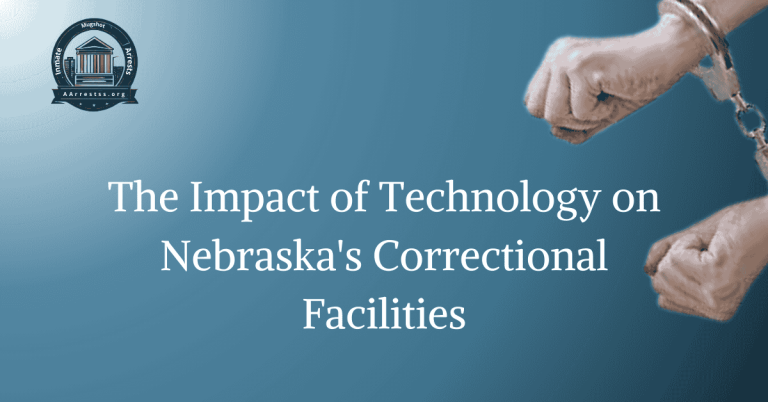Oklahoma’s County Jails: Challenges and Solutions
Oklahoma’s county jails face numerous challenges that require immediate attention and innovative solutions. Overcrowding is a pressing issue, with many jails operating at or above capacity. This not only compromises the safety and well-being of inmates but also strains resources and creates a stressful environment for correctional staff.
In addition to overcrowding, there is a lack of adequate mental health services within county jails. Many inmates suffer from mental health disorders and substance abuse issues, which often go untreated while in custody. This not only perpetuates a cycle of recidivism but also puts a significant burden on the criminal justice system.
Overcrowding in County Jails
One of the major challenges faced by Oklahoma’s county jails is overcrowding. Many jails are operating at or above capacity, which raises significant concerns for the safety and well-being of inmates. Overcrowding not only compromises the ability to provide adequate living conditions but also strains resources and creates a stressful environment for correctional staff. Immediate attention and innovative solutions are necessary to address this pressing issue.
The Impact on Inmate Safety and Well-being
When county jails are overcrowded, it becomes difficult to ensure the safety and well-being of inmates. Limited space and resources can lead to increased violence and tension among inmates, putting their physical and mental health at risk. Overcrowding also hampers the ability to provide necessary medical care and access to basic amenities, further compromising the well-being of those in custody.
Strain on Resources
Operating a jail beyond its capacity puts a strain on resources. Overcrowding means that jails have to manage a larger inmate population with limited staff, facilities, and funding. This leads to challenges in providing essential services, such as healthcare, food, and sanitation. Additionally, overcrowded jails often face difficulties in implementing effective rehabilitation and reintegration programs, which are crucial for reducing recidivism rates.
The Stressful Environment for Correctional Staff
Overcrowding not only affects inmates but also creates a stressful environment for correctional staff. Increased inmate population means increased workload and responsibility for staff members, often leading to burnout and decreased job satisfaction. The demanding nature of overcrowded jails can impact the mental health and well-being of correctional officers, further exacerbating the challenges faced by county jails.
Lack of Mental Health Services
In addition to overcrowding, county jails in Oklahoma also struggle with a lack of adequate mental health services. Many inmates suffer from mental health disorders and substance abuse issues, which often go untreated while in custody. This lack of treatment not only perpetuates a cycle of recidivism but also puts a significant burden on the criminal justice system.
The Impact on Recidivism Rates
Without access to proper mental health services, inmates with mental health disorders and substance abuse issues are at a higher risk of reoffending. Untreated mental health conditions can contribute to behavior that leads to repeat offenses and a cycle of incarceration. Addressing this issue is crucial for breaking the cycle of recidivism and promoting successful reintegration into society.
The Burden on the Criminal Justice System
The lack of adequate mental health services in county jails puts a significant burden on the criminal justice system as a whole. Without proper treatment, inmates with mental health disorders often struggle to reintegrate into society upon release, leading to a higher likelihood of re-arrest and re-incarceration. This not only strains resources but also perpetuates the cycle of incarceration and adds to the overall workload of the criminal justice system.
FAQs
What are the challenges faced by Oklahoma’s County Jails?
Oklahoma’s County Jails face numerous challenges, including overcrowding, limited resources, and a lack of sufficient staff. These challenges make it difficult to provide proper care and supervision for inmates.
How does overcrowding impact Oklahoma’s County Jails?
Overcrowding in Oklahoma’s County Jails puts a strain on the facilities, leading to issues with sanitation, safety, and the overall well-being of inmates. It also makes it harder for staff to effectively manage and monitor the inmate population.
What resources are lacking in Oklahoma’s County Jails?
Oklahoma’s County Jails often lack adequate funding for essential resources such as medical care, mental health services, and educational programs. This lack of resources hinders the ability to rehabilitate inmates and reduce recidivism.
How does a shortage of staff impact Oklahoma’s County Jails?
The shortage of staff in Oklahoma’s County Jails makes it challenging to maintain a safe and secure environment for both inmates and staff. It also leads to increased stress and burnout among the existing staff, affecting their ability to effectively carry out their duties.
What are some potential solutions to the challenges faced by Oklahoma’s County Jails?
Possible solutions include implementing diversion programs to reduce the inmate population, increasing funding for resources and staffing, improving collaboration between county jails and other criminal justice agencies, and exploring alternative sentencing options for non-violent offenders.
How can the community contribute to addressing the challenges in Oklahoma’s County Jails?
The community can contribute by supporting initiatives and organizations that advocate for criminal justice reform, volunteering in jail programs aimed at rehabilitation and reintegration, and advocating for increased funding and resources for the county jails.








